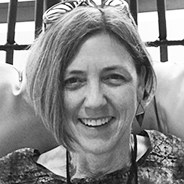Each season, arcCA DIGEST asks experts in the season’s theme – this time around, the ways in which California looms large in the design of the built environment – to identify emerging issues, problems, opportunities, circumstances, etc., to which they believe architects should be alert.

California! Where to start? It is profoundly significant in so many ways.
Needless to say, the Golden State is an economic powerhouse, with a GDP that is fifth in the world. Beyond that, it defines how we live now. Three years ago, the London Design Museum mounted an exhibition entitled “California: Designing Freedom.” Its curator Justin McGuirk told me that “the entire world has become Californian due to the outsized influence of Silicon Valley…with roots in California’s counterculture.”
If the state is a cultural and technological leader, it perhaps also sets the tone politically. Voters here recently chose a democratic White House and a libertarian gig economy (rejecting Prop 22 and Prop 15). That may represent wisdom, confusion, or the blithe Californian mix of good intentions and me-ism. These twin themes are manifest in ongoing, bitterly contested efforts statewide to build affordable housing and in another area in which California dominates: clean tech.
This is not a state that believes in saving the planet through consuming less. No, it believes you can beat back climate change while having more. Entrepreneurs, Elon Musk most prominent among them, generate electric-powered gadgets, gismos, and cars that promise freedom from guilt combined with love of ease. And, with the support of Southern California’s still dominant storytelling industry — entertainment and PR — that message resounds around the world.
Oh, California!
Allison Arieff is Senior Editor of City Monitor and author of the book Prefab. Previously, she was Editorial Director of SPUR, a Bay-Area based urban planning and policy think tank, and was a longtime op-ed columnist for the New York Times.
California matters because it is always ahead of the game on so many issues, from environmental regulations to gay marriage. In terms of the built environment, however, California is failing miserably. We might have a lot of LEED-certified commercial buildings, but the housing crisis that plagues the state is shocking and unacceptable. And yet, it only gets worse. It costs nearly $800,000 to build a single unit of housing in San Francisco. An affordable housing project in Fruitvale required financing from more than 30 sources! The same battles play out decade over decade, from NIMBYism to concerns over gentrification, but any true reform fails to get any traction. Legislators like Buffy Wicks, David Chiu, and Scott Wiener have tried and tried to get housing bills passed, to no avail.
Connected to the housing problem is the state’s vastly underfunded infrastructure and public transportation. Land use that favors the automobile continues unabated. Suburban and exurban sprawl seems never-ending. Any plans that would do the logical, equitable, and environmental thing — locate housing and jobs near transit — are, excuse the pun, repeatedly derailed.
So, while California matters in so many significant ways, and I can’t imagine living anywhere else, that doesn’t mean it’s not endlessly frustrating. We may be living here at the epicenter of innovation, but the hard truth is that nothing Silicon Valley has done has a measurable positive impact on the state’s built environment. All the 3-D printed homes, ADUs ordered via web interface, and promises to “crack” the code of prefab just haven’t panned out. To end on the obligatory note of hope, ventures like Factory OS, which has built a significant amount of modular multi-family homes is a bright spot. As is the COVID-era emphasis on transforming streets into pedestrian spaces…let’s keep that in place forever.

Two important issues sure to be on the 2021 calendar of the California Legislature are:
Sales Tax on Services
This is an issue that does not go away. It always seems to hang around waiting for its opportunity. Unfortunately, we think the proponents of expanding the sales tax to services will see 2021 as their best opportunity. California likely will face a sizeable budget deficit next year, and the Legislature may find it easier to increase taxes than cut spending. Because the proposition to increase commercial property taxes was rejected by the voters, and Governor Newsom has stated his opposition to increasing income taxes paid by the wealthy and a wealth tax, a sales tax on services may appear to be the next, best option. AIA California is a member of a coalition of professional service providers and business groups organized for the sole purpose of stopping any attempt to impose a sales tax on professional services. Our coalition has prepared an economic analysis of a sales tax on services, performed public polling, and engaged in very targeted grassroots lobbying against it. Should a sales tax on services proposal surface in the Legislature next year, AIA California will run a full grassroots campaign against it and give every member an opportunity to communicate their opposition to their State Assembly Members and Senators.
Zero Net Carbon Continuing Education
AIA California will ask the Legislature and Governor next year to prepare architects to lead the effort in decarbonization of buildings, asking that architects be required to take 5 hours of continuing education in building decarbonization every two years as a condition of license renewal. Doing so will educate all architects in California about the urgency of rapid carbon reduction in the built environment and provide simple, cost-effective Zero Net Carbon design strategies and tools to get there. Preparing architects for rapidly changing building codes and a marketplace shifting toward advanced energy efficiency, carbon neutrality, and long-term resilience is necessary to mobilize the profession to take leadership in accelerating statewide decarbonization to protect the health, safety, and welfare of all Californians. If we are successful, this continuing education requirement would go into effect for the 2023 renewal cycle.

Unique to California is its diversity of natural building conditions. While California’s seismic conditions are legendary, it is also home to a variety of other environmental considerations. It features some of the highest (Mount Whitney), the lowest (Death Valley), the coldest (Truckee) and the hottest (again, Death Valley) regions in the contiguous United States. Because they are adopted based on climatic, geological, seismic, and topographical conditions, California is the Aberdeen Proving Grounds for building codes, as well as building design and construction methods and materials.
California’s building code development process is one of the most defined, most transparent in the nation, yielding sensible and usable state building standards and administrative regulations. Perhaps most significant was the creation of CALGreen, the first-in-the-nation mandatory green building standards code. It’s been said, “As California goes, so goes the nation.” Proudly, this maxim is true, for from CALGreen followed the International Green Building Code (IGCC). When first adopted, CALGreen was introduced as voluntary measures and, after proving its value, then became mandatory. In doing so, it not only served California in its own right, but also served the rest of the country – and beyond – as a template for the IGCC.

From the vantage point of higher education, I see California engaged in a nationwide effort by colleges and universities to reach beyond their gates to improve, through public-private partnerships, the communities in which they’re situated. As one example, UC Davis’s Aggie Square innovation hub in Sacramento promises substantial benefits for jobs, housing, and the economy of the region.

According to PitchBook, 11 of the top 12 venture capital investors in global construction tech are based in the Bay Area. They are investing in such potential paradigm-shifters as Katerra (Menlo Park), PlanGrid (San Francisco), and Procore (Santa Barbara). Of 100 such start-ups identified by CB Insights as working in construction tech globally, over a quarter are based in California. They may compete with architects for control of segments of the design and construction process, or they may accelerate what architects do, so that we can look at restructuring our fees, to spend more time on design, which is what we like most and do least. In addition to the build tech sector, a lot of money is going toward technologies dedicated to how we use and move through our cities, from such sources as San Francisco-based Urban Innovation Fund. And the AIA has just announced a partnership with San Francisco-based private equity group True Wind Capital, whose investment will enable the suite of AIA contract documents to become more competitive.

California is an outsized state; a nation-state, as our governor likes to say. The birthplace of not one but two industries that dominated the 20th century (entertainment and technology; or, in local terms, Hollywood and Silicon Valley). Home to two iconic American cities. Home to the driest desert, the hottest fires, the biggest trees; the best beaches, the worst traffic. For better and worse, on the leading edges of suburban sprawl and environmental conservation. Such lists could go on and on.
Yet these days the Golden State is showing its age, losing its edge. Whatever the metaphor, the evidence is everywhere. Our built infrastructures — housing, schools, libraries, parks, roads, utilities, transit — are in varying stages of decay and disrepair, suffering from disinvestment and neglect. By now this is a familiar story to readers of arcCA DIGEST. But — in true California spirit — this is also an opportunity: the chance to take the lead in what surely should be the great architectural project of the 21st century. Which is not to build the world but to repair it.
Here, I am influenced by two essays we published on Places. In “Maintenance and Care,” Shannon Mattern writes: “What we really need to study is how the world gets put back together. I’m not talking about the election of new officials or the release of new technologies, but rather the everyday work of maintenance, caretaking, and repair.” In “All Is Lost: Notes on Broken World Design,” Kiel Moe and Daniel Friedman argue for nothing less than a new paradigm: “Broken world thinking is thinking both the capabilities, and the culpabilities, of design. To paraphrase the philosopher Paul Virilio, to invent the ship is to also invent the shipwreck . . . . Broken world thinking is not a matter of learning to anticipate failure, and therefore learning from that failure. It is a habit of mind that productively and generatively thinks through the next states and effects of our systems as the very basis of design. In modernity, to break is to fail. Broken world thinking, in contrast, is optimistic about the inevitability of that breakdown.”
In these articles the authors are challenging us to acknowledge that the future will not — should not — resemble the past. That we need to replace the obsolete mantras and rhetorics —progress, innovation and disruption, limitless growth, the conquest of nature — with the more modest values of maintenance, repair, continuity, and care. Putting what’s broken back together; adapting our infrastructures, cities, landscapes, and buildings to the realities of changing climates and shifting demographics — it’s a big job. A California-sized job.

California matters, because, as a jurisdiction approaching 20% of the nation’s licensed architects, its standards and innovations can impact the practice of architecture nationwide.
It matters, because as the United States searches for solutions to the seemingly intractable homelessness problem, the design community in California can play a prominent role as, not to its credit, the state is home to nearly 50% of all unsheltered persons.
It matters, because, as projections show, the United States is moving inexorably to a “majority-minority” country. California has reached that status first and must address what that means for social, economic and government policy.
It matters, because, on account of the breadth and variety of living environments and ecosystems here, we must be equipped to deal with disaster preparedness across the gamut of, e.g., coastal erosion, drought, earthquakes, high-rise safety, mudslides, wildfires — and the concomitant need for creative design/construction preventive measures.
Cover photo of McGee Mountain and Mount Morrison of the Sherwin Range of the Sierra Nevada, California, as seen from Benton Crossing in the Long Valley Caldera, by TheDailyNathan, CC BY-SA 3.0.
From arcCA DIGEST Season 07, “Concerning California.”






